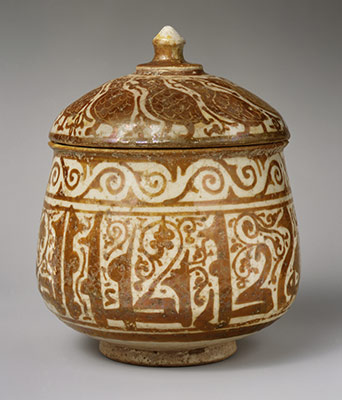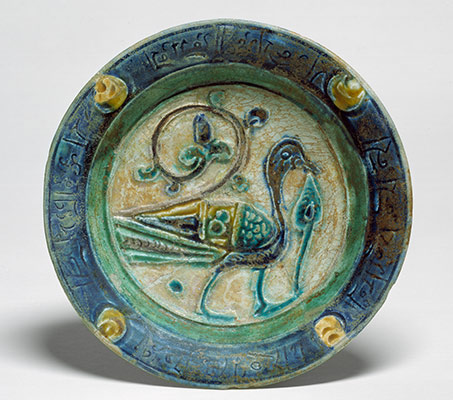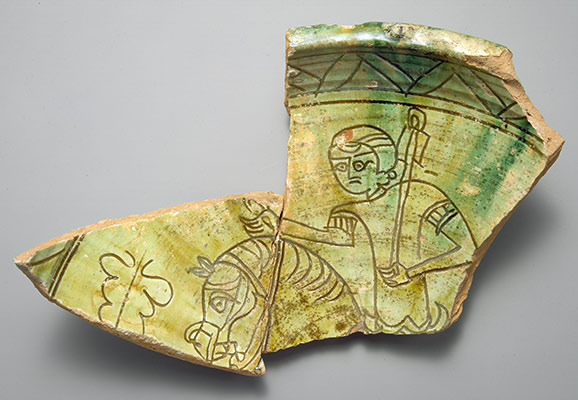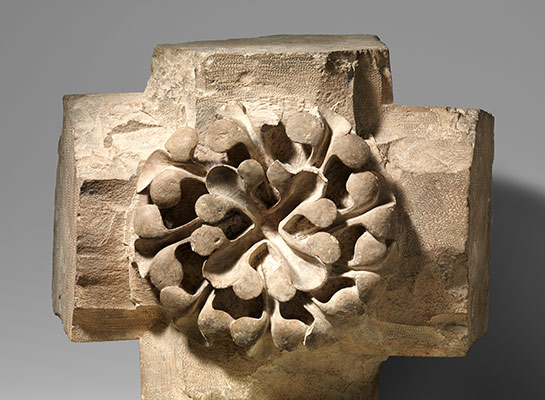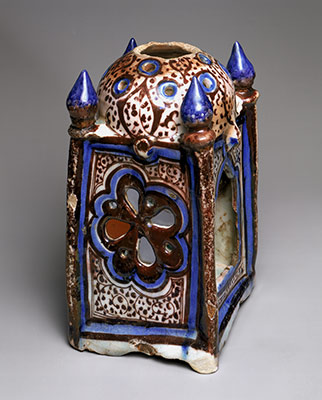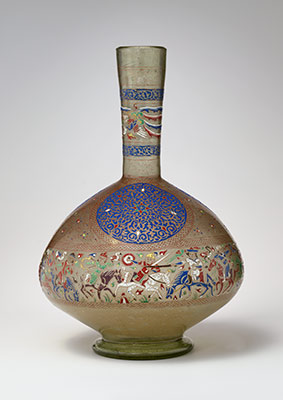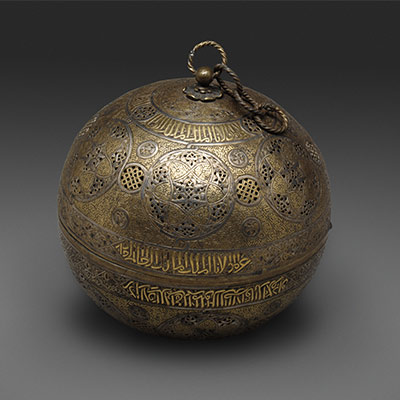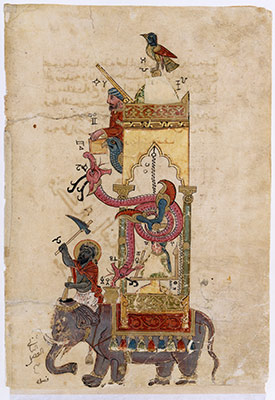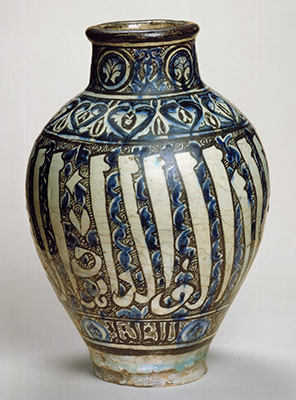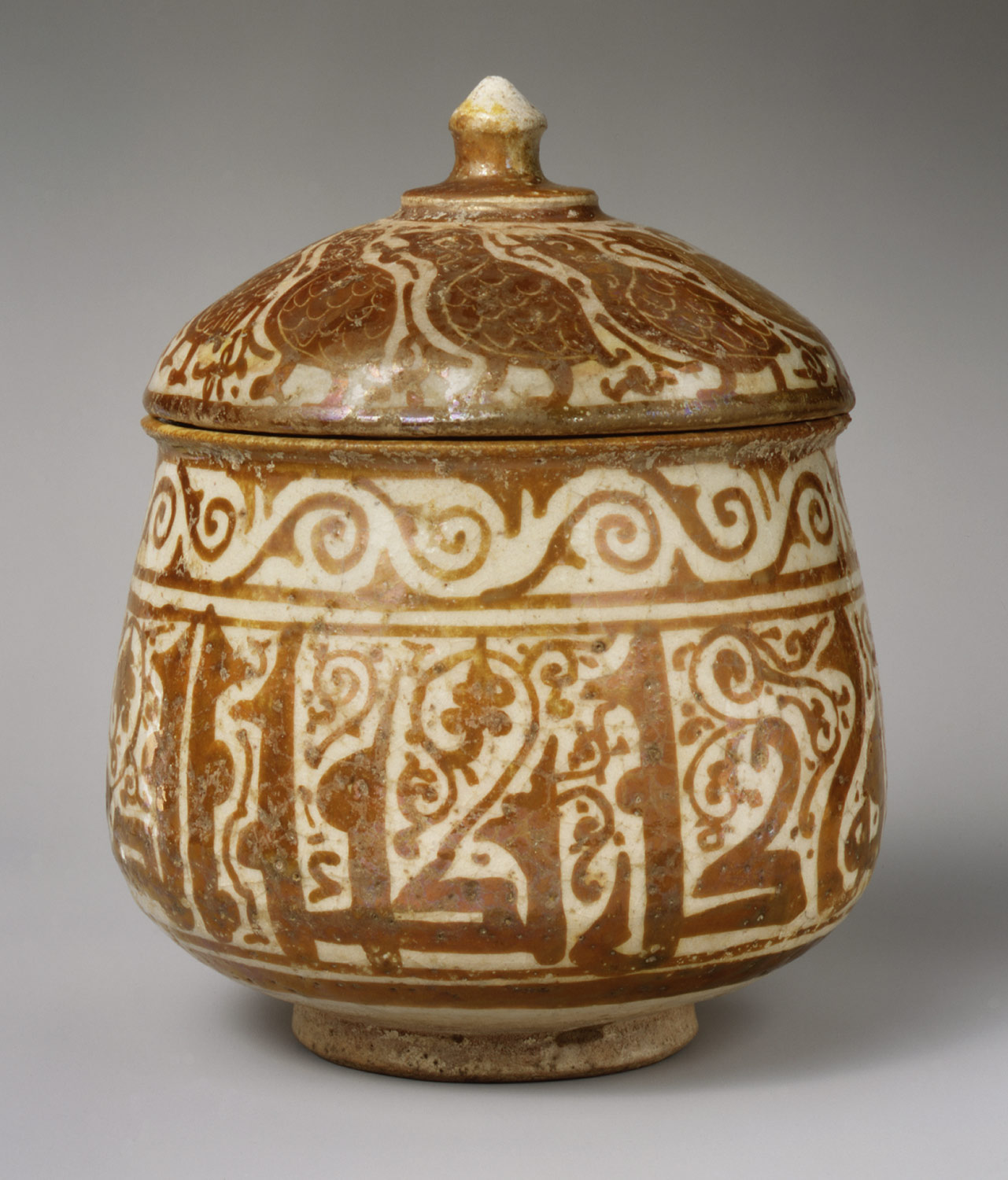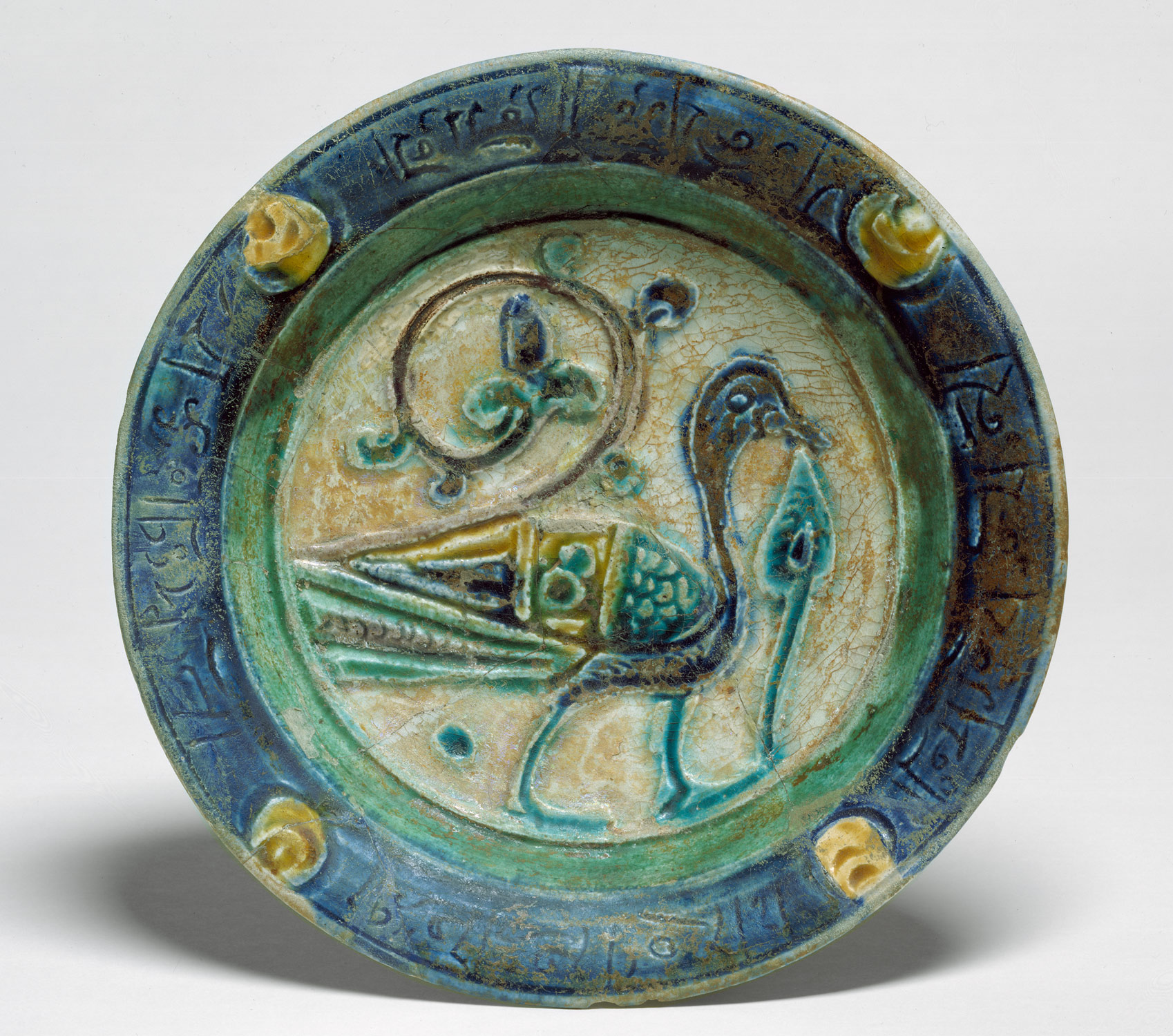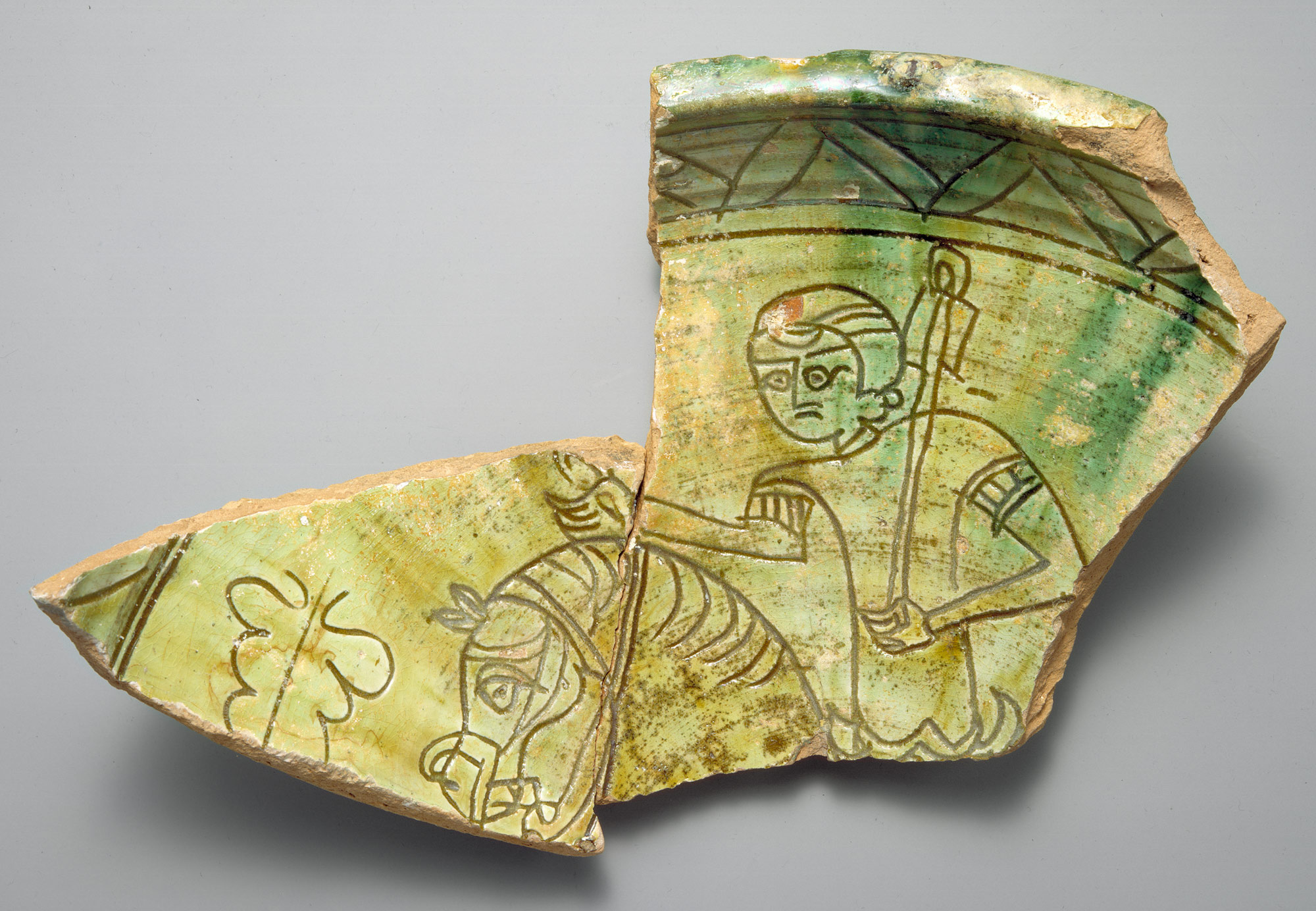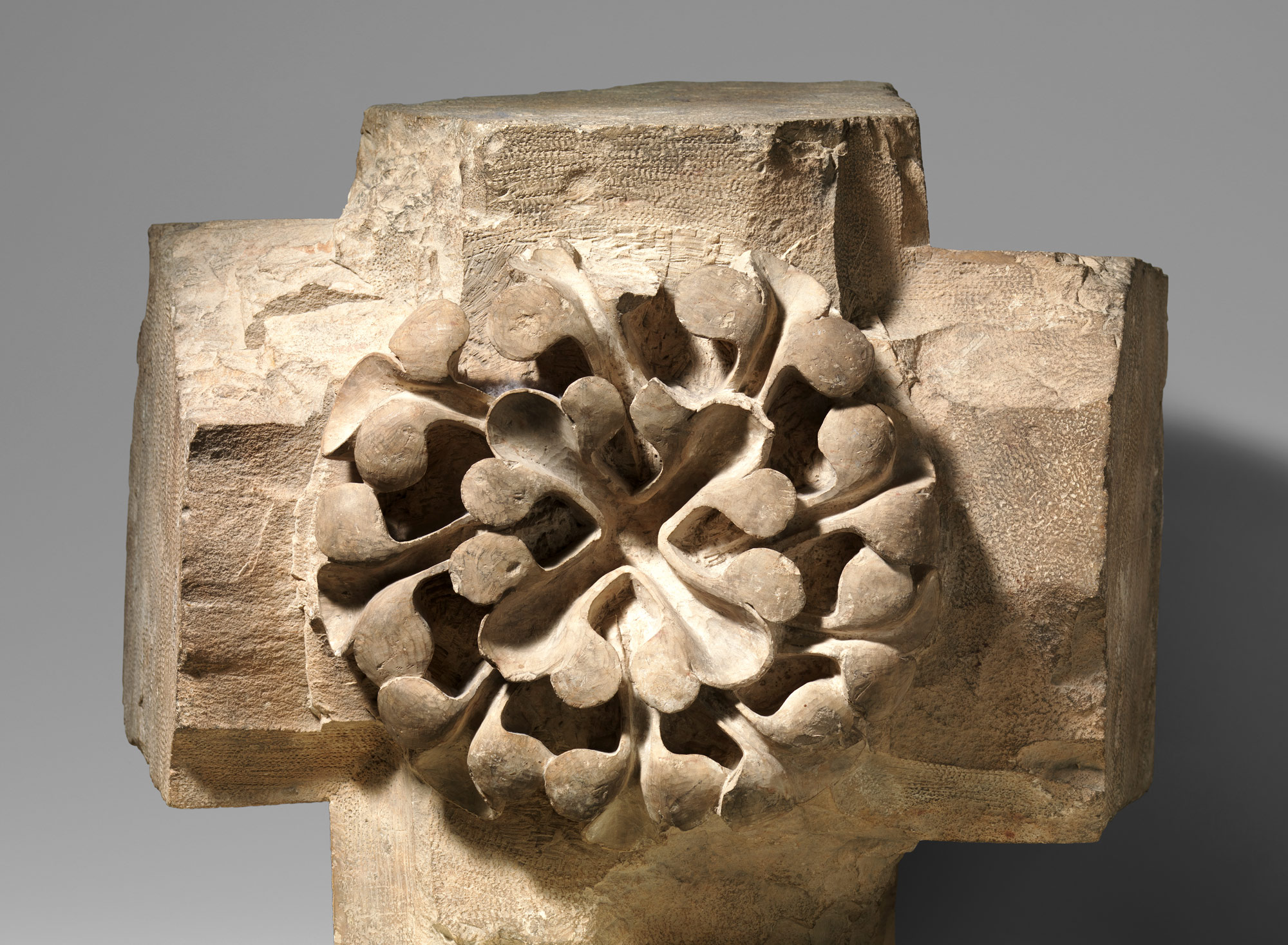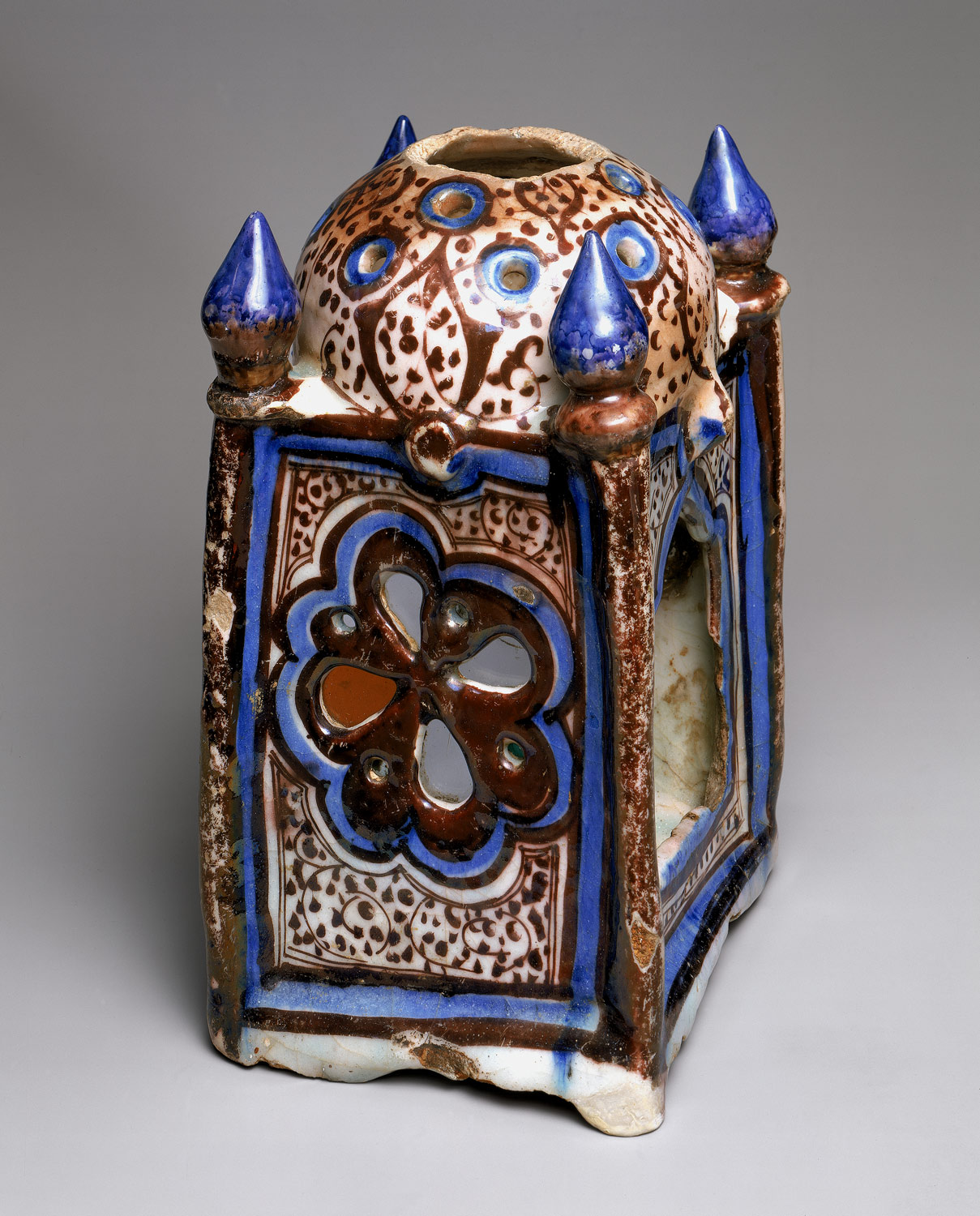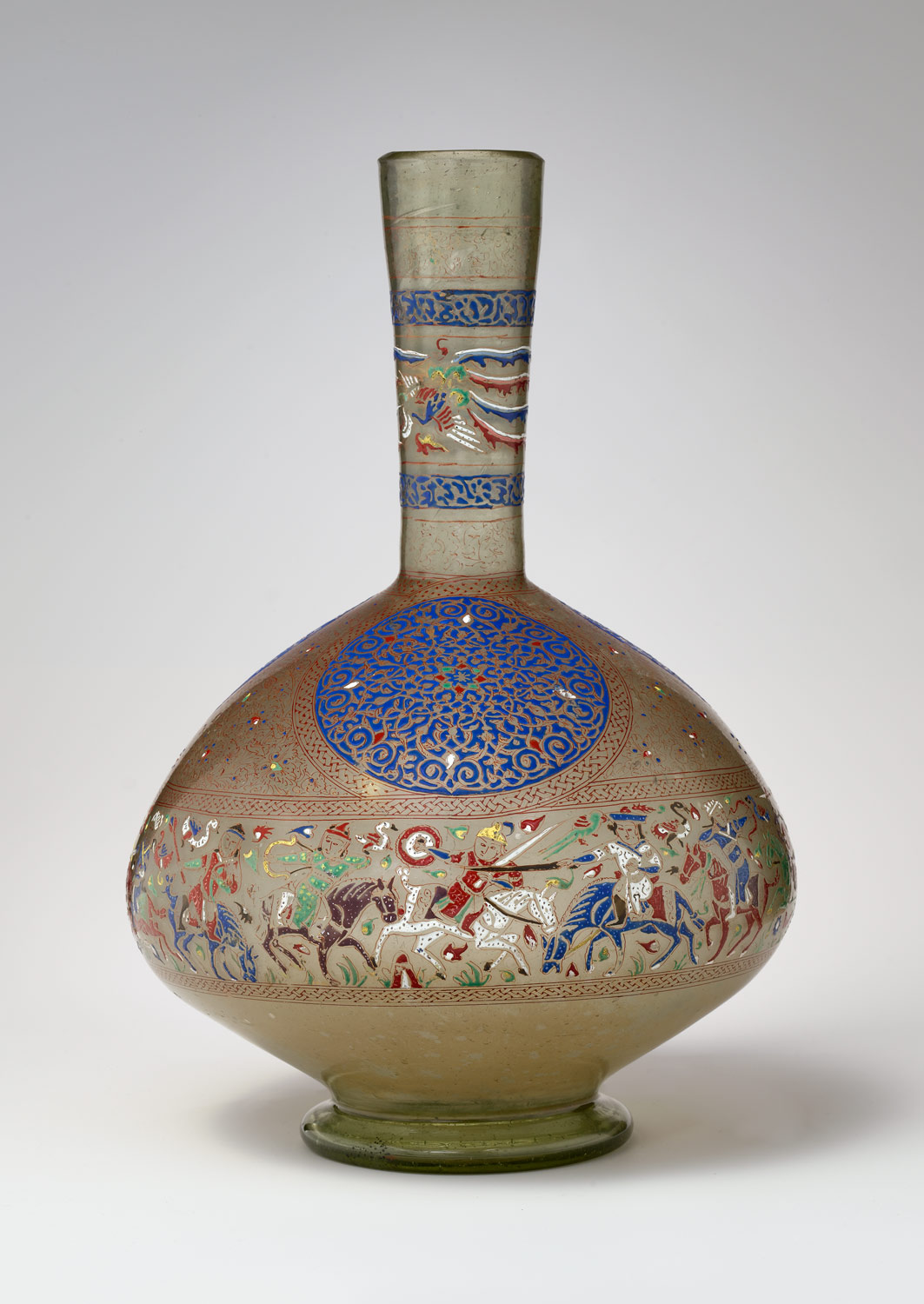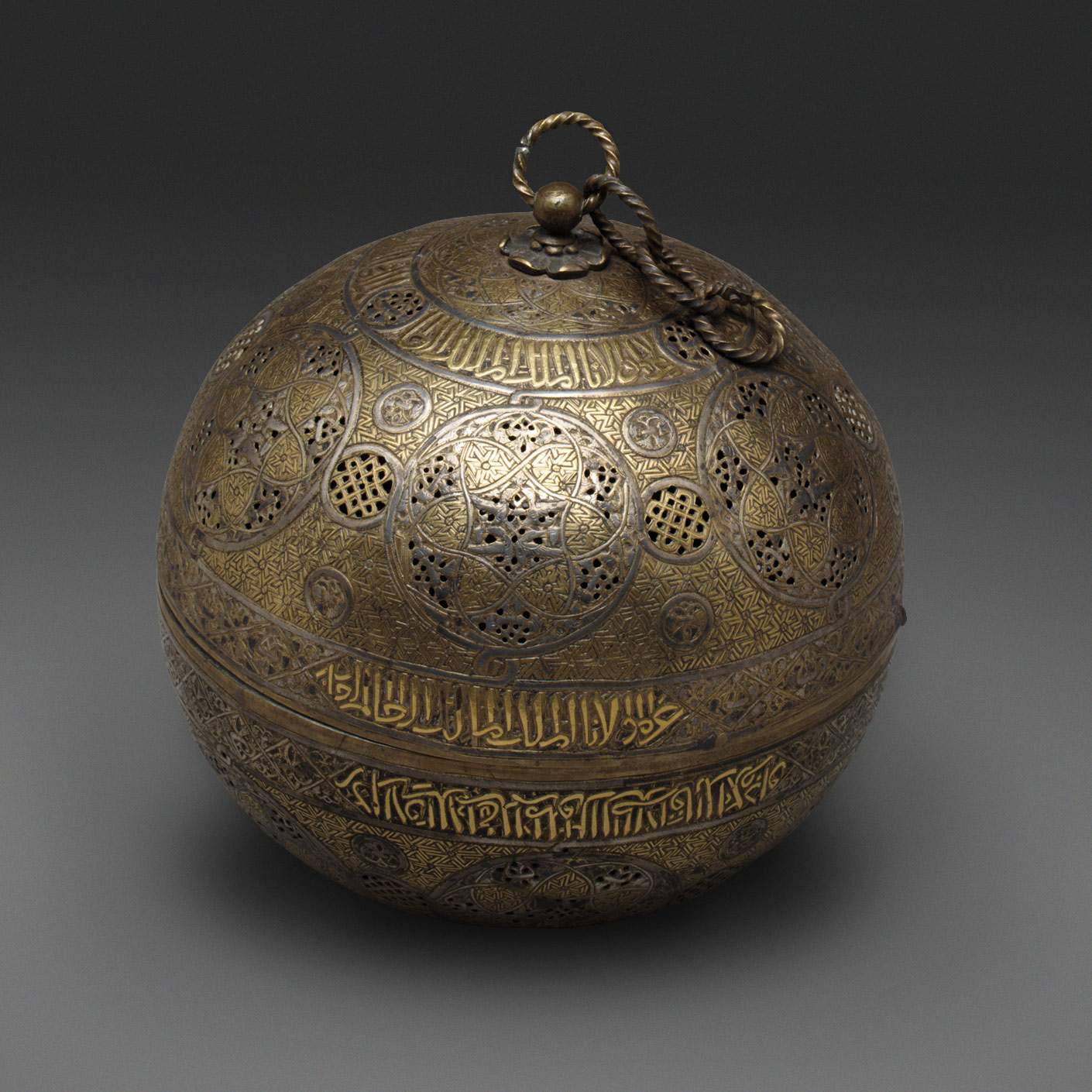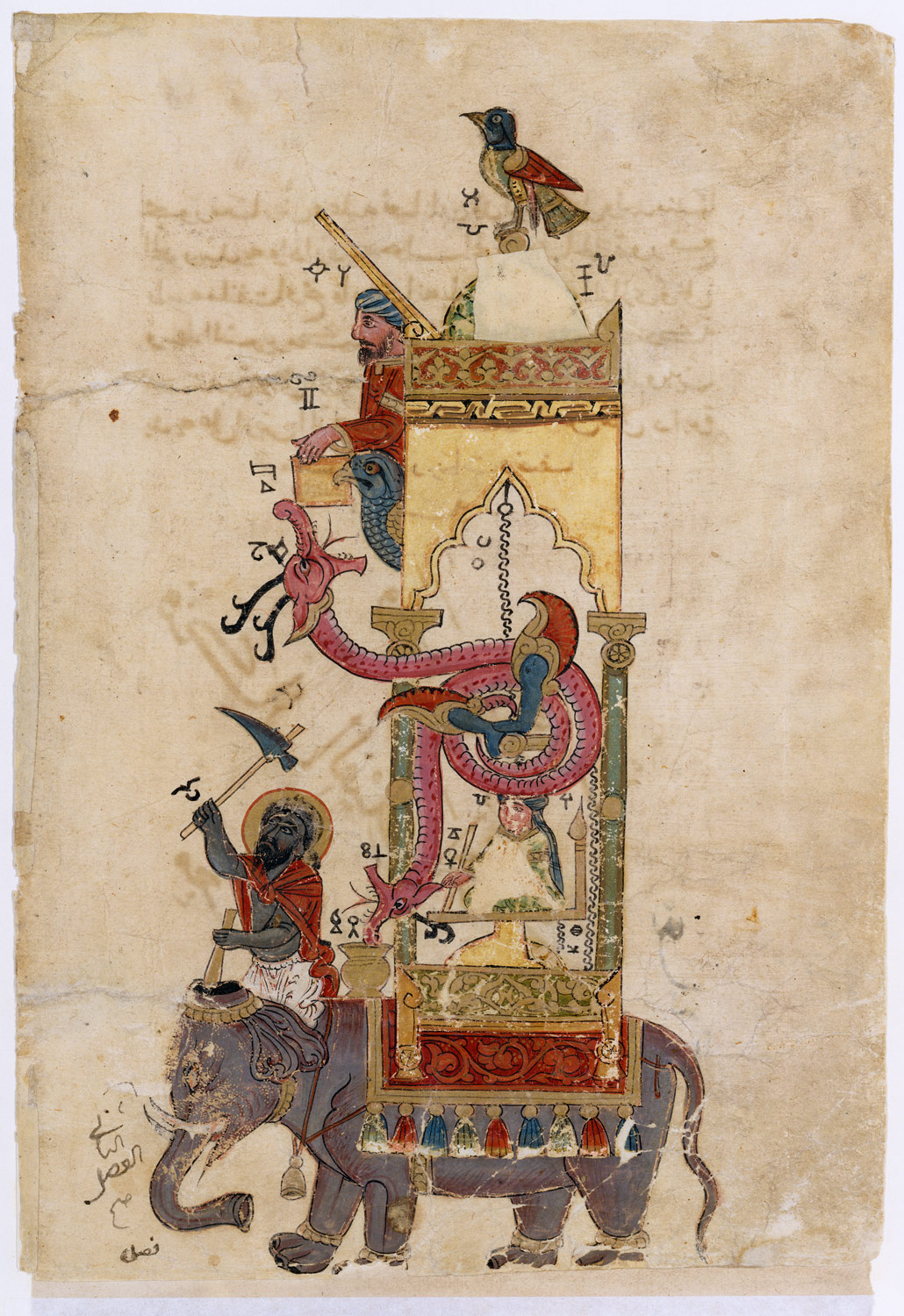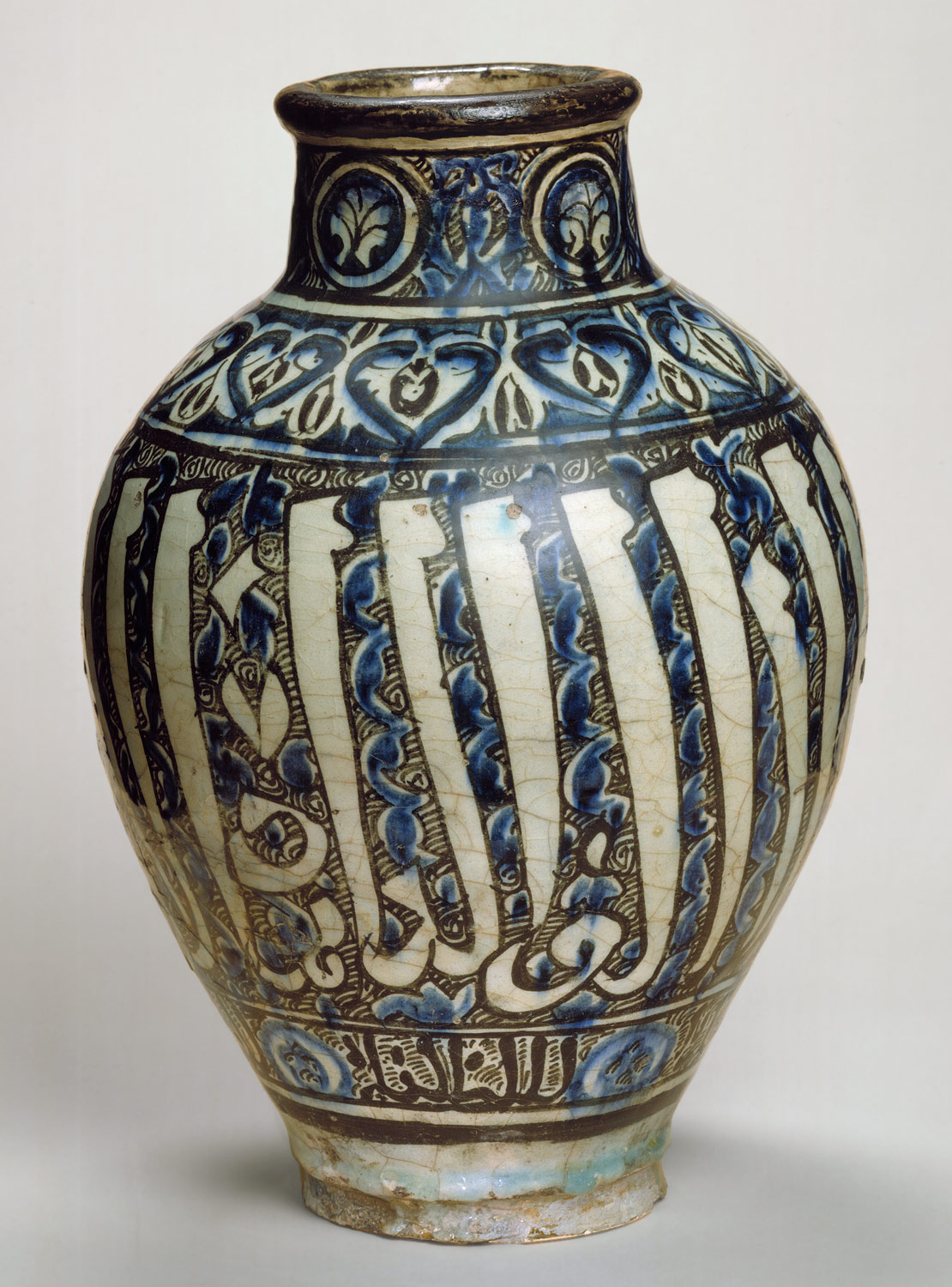Political fragmentation and cross-cultural exchange characterize the period from 1000 to 1400 in the eastern Mediterranean. Contributing to the complex sociopolitical scene are armies from the East, such as the Seljuqs, Mongols, and Timurids, and Crusader forces from the West—including eight major Crusades and many smaller expeditions—along with the remnants of Byzantine rule. The establishment of the Mamluk sultanate in the eastern Mediterranean following the defeat of the Mongols in the thirteenth century helps bring stability to the region.
The Eastern Mediterranean, 1000–1400 A.D.
Timeline
1000 A.D.
1100 A.D.
1100 A.D.
1200 A.D.
1200 A.D.
1300 A.D.
1300 A.D.
1400 A.D.
Overview
Key Events
-
969–1171
As part of the Fatimid realm, which controls a significant part of the Mediterranean, including Algeria, Tunisia, Sicily, and Egypt, Syria experiences prosperity as well as tremendous activity in the arts.
-
ca. 1050
The Byzantine emperor Constantine IX Monomachos (r. 1042–55) restores the complex of the Holy Sepulcher in Jerusalem, the site commemorating the location of Christ’s death and burial.
-
ca. 1095–1099
The First Crusade is waged to recapture previously Christian lands in the eastern Mediterranean under Muslim rule, especially Jerusalem. On July 15, 1099, Crusader forces expel the Fatimid governor from the Holy City, ending more than 450 years of Islamic rule.
-
ca. 1112–1149
In Jerusalem, Crusader architects unify the Calvary chapel (the site of Christ’s crucifixion) and the Byzantine shrine of the Holy Sepulcher. The complex is rebuilt in the tradition of a French-Romanesque pilgrimage church, while incorporating portions of the preexisting Byzantine wall mosaics. Attached to this complex is a major scriptorium for the production of lavish manuscripts strongly influenced by the Byzantine tradition.
-
1130s–1140s
Crusader patrons leave their mark on the eastern Mediterranean. In Jerusalem, a Romanesque sculptural program is added to the Temple Mount (Haram al-Sharif). The Knights Hospitaller erect their own complex in the Gothic tradition. In other newly conquered territories, Crusader fortresses are built, including Castle Montfort and the most notable example, the Krak des Chevaliers (in present-day Syria).
-
1146–1174
Zangid ruler Nur al-Din commissions hospitals and institutions of higher learning in Aleppo (Maristan, 1148–55; Madrasa al-Shu‘aybiyya, 1150–51) and Damascus (Maristan, 1154; Madrasa Nuriyya, 1172). Such works are emulated and expanded under later Ayyubid and Mamluk rulers.
-
1159
Byzantine emperor Manuel I Komnenos conducts a triumphal entry into Antioch. The Crusader prince Renaud, forced to recognize Manuel’s suzerainty, walks alongside Manuel’s horse in the procession. An avid fan of western European culture, Manuel organizes celebrations and participates in jousting and other Western-style contests.
-
1186–1187
Ayyubid rule is established in the eastern Mediterranean region during the reign of Salah al-Din (Saladin, r. 1169–93). Salah al-Din also recovers Jerusalem from the Crusaders following the Battle of Hattin (1187), though, following a failed treaty, the city is ceded until 1244, when it is retaken for good.
-
1186–1260
Along with their renown in the arts of inlaid metalwork, pottery, and enameled glass, the Ayyubids are also great builders. Their generous patronage and local courts help revive the cities of Aleppo and Damascus. The outstanding secular architecture from this period includes the fortified citadel of Aleppo (early thirteenth century). In terms of higher institutions for religious learning, the Madrasa Zahiriya (1219) in Aleppo as well as the Sahiba in Damascus (1233) are noteworthy and exemplify the Ayyubid interest in Sunni education after the Shi‘i interlude in the region under the Fatimids.
-
1189–1192
The Third Crusade under the English king Richard I Lionheart fails to recover Jerusalem, but establishes the Crusader kingdom of Cyprus after seizing control of the Byzantine island. This event marks the decisive influx of Western artistic traditions into Cyprus.
-
1202–1204
The Fourth Crusade is diverted from the eastern Mediterranean to Byzantine Constantinople, resulting in the takeover and occupation of Byzantine territories for nearly six decades. Artistic treasures from Byzantium are taken to western Europe as spoils of war.
-
1244
Muslim armies recover Jerusalem from the Crusaders, and the city remains under Islamic rule until the twentieth century (1948).
-
1260–1516
Following the defeat of Mongol armies at the Battle of ‘Ain Jalut (1260), the Mamluks inherit the last Ayyubid strongholds in the eastern Mediterranean. Former military slaves, the Mamluks create the greatest Islamic empire of the later Middle Ages. During this time, the arts—especially enameled glass, inlaid metalwork, woodwork, and textiles—flourish, and various religious and public monuments are built.
-
1260–1277
Besides great military successes, the reign of the first major Mamluk sultan, Baybars al-Bunduqdari, a Qipchaq Turk, is defined by important building activity for public and pious foundations. Following his unexpected death in Damascus, a mausoleum is created there in his memory (1277–81).
-
1375
The kingdom of Armenian Cilicia (in present-day southern Turkey), after three centuries of rule from its capital at Sis, ends when a Mamluk force overruns the region and removes the last king of the dynasty. The Cilician court is famous for its extensive patronage of remarkable illuminated manuscripts.
-
ca. 1280–1400
Mamluk architectural patronage focuses on public and pious foundations, including madrasas, mausolea, minarets, and hospitals. Aleppo and Damascus are important for Mamluk commissions and building projects, though little remains from this period.
-
1400/1401
The armies of Timur (Tamerlane) devastate Syria, burning the cities of Aleppo and Damascus and destroying many important buildings.
Citation
“The Eastern Mediterranean, 1000–1400 A.D.” In Heilbrunn Timeline of Art History. New York: The Metropolitan Museum of Art, 2000–. http://www.metmuseum.org/toah/ht/?period=07®ion=wae (October 2001)
Related
Map
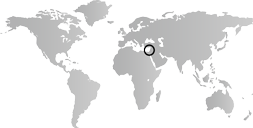
Primary Chronology
Secondary Chronology
Lists of Rulers
See also
Keywords
- Abbasid Art
- Arabian Peninsula
- Asia
- Ayyubid Art
- Byzantium
- Cyprus
- Eastern Mediterranean
- Egypt
- Fatimid Art
- Ilkhanid Art
- Islamic Art
- Islamic Art in the Early Period
- Islamic Art in the Later Period
- Islamic Art in the Medieval Period
- Israel
- Jerusalem
- Jordan
- Lebanon
- Mamluk Art
- Ottoman Art
- Palestine
- Romanesque Art
- Seljuq Art
- Syria
- Timurid Art
- Turkey
- West Asia
- 11th Century A.D.
- 12th Century A.D.
- 13th Century A.D.
- 14th Century A.D.
